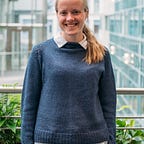A Summer at Spacemaker
This summer we had the pleasure to welcome 21 interns to our Oslo and Boston offices. Over periods ranging from 6–11 weeks they got a taste of life as a Spacemaker, working across the product organization with development, research, design, and business development.
We truly enjoyed having each and every one of you and are really impressed by everything you managed to accomplish during your relatively short stay.
Here is a quick look at some examples of what our interns worked on.
Real-time analysis
One of our interns looked at running analysis in realtime while the user interacts with the model.
The two methods that gave results where both based on GPUs, using shadow mapping in the browser and realtime Ray Tracing in our backend.
The backend analysis runs on the newest generations of GPUs which adds hardware acceleration to Ray Tracing applications.
Daylight optimization
A big concern facing many real-estate developers is how to ensure each apartment has good daylight qualities. According to the Vertical Sky Component standard, the amount of daylight on a facade corresponds to the total sky area that is not blocked by obstacles like for instance other buildings or mountains. As determining the amount of daylight is a complex calculation, a typical approach to solve this problem is to enforce a minimum distance between the buildings. To ensure that they comply with the daylight restrictions, this distance is often stricter than it actually has to be. This summer, one of our interns developed a model that calculates the exact daylight on each point of building facades by integrating over the view area. This model is formulated in a way that allows us to use it in building optimization. This means that we have full control of how a change in, for instance, a building height will influence the daylight on all other buildings on the site. The model is of great help for us as it allows us to either minimize facade area with a daylight factor below a certain requirement, or we can use it as a constraint and say that we will not allow any apartments with less daylight than the given requirement.
GAN research
For our Research Interns, generation was the summer’s big theme. They explored whether we could use advanced machine learning methods including Generative Adversarial Networks (GAN) at different points in our pipeline, both to learn and challenge the existing built world. GANs are cutting edge and an area with a lot of ongoing research. As a result a significant amount of time went into reading the newest papers and finding suitable applications within our space.
Our interns diverse backgrounds provided a great opportunity to learn from each other through our weekly Brown Bag Lunch Series — though the company’s split across the Atlantic meant we had to compromise on the lunch aspect. Whether it was for mid-morning coffee, an afternoon cookie, or evening ice cream, we covered a wide variety of topics, ranging from Architecture Basics, Computer Vision, Dark Matter, and Off-Shore Wind Analysis. We also spent time on more traditional outings including payday beer, a boat cruise, and other social events.
To our interns: Thank you so much for all your hard work this summer!
